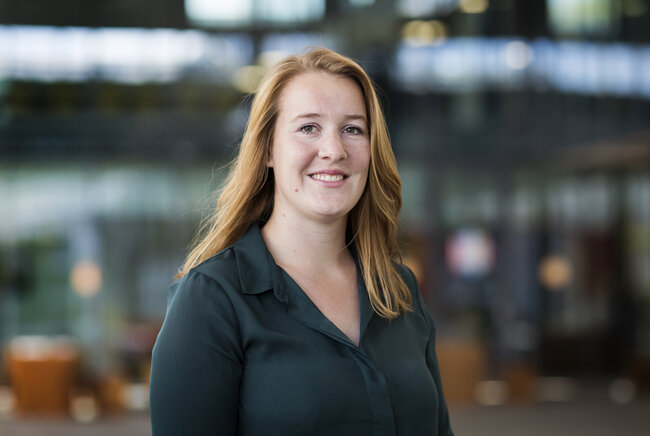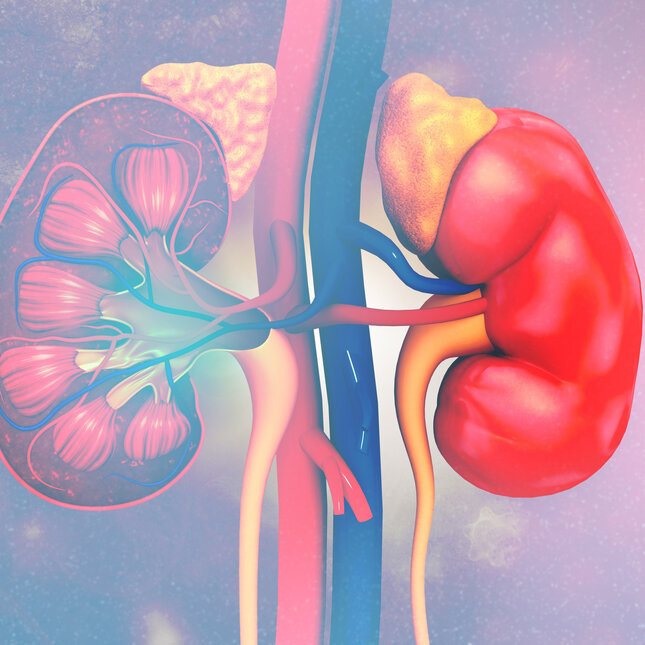Intervening in the body’s plumbing system: engineering kidney tubes
Marjan Hagelaars defended her PhD thesis at the department of Biomedical Engineering on January 20th.

The kidney is the plumbing system of the human body. In the kidney, millions of tubes are interconnected to transport the filtrate containing waste products towards the bladder. These tubular structures consist of multiple types of epithelial cells that all have a specific function in filtering the blood. For her PhD research, Marjan Hagelaars’ goal was to understand how these tubular structures are formed and specifically identify the role of mechanics in this process. Thereafter, she used this knowledge to recreate tubular structures in vitro.
Each person is born with about one million tubular structures per kidney, but unlike other tissue types in the body, these tubes cannot regrow. When the kidney tubes stop functioning properly, a person must undergo dialysis while waiting for a possible transplantation. Bio-engineering kidney tubes in the lab could lead to alternative treatments for kidney disorder patients, but kidney tubes are complex in terms of their structural shape and function. .
Understanding tubulogenesis
Kidney tubes are home to multiple types of epithelial cells with specific functions in filtration. They are formed during development by epithelial cells that self-organize into cylindrical structures.
This self-organization process is known as tubulogenesis and consists of consecutive morphogenic processes, during which the cells communicate with their environment and neighboring cells to coordinate their movements, proliferation, and differentiation across time and space.
In her PhD thesis, Marjan Hagelaars and her collaborators used both experiments and computational models to gain a better understanding of how the mechanisms that govern the morphogenic processes in tubulogenesis are regulated by mechanical cues from the microenvironment. She aims to use the insights gained to guide epithelial cells towards a tubular shape.

Main challenge
“We started this project from scratch and had to pioneer in the field. Collaborations were of upmost importance in this work, as we did not possess the knowledge about kidney epithelial cells ourselves,” says Hagelaars. “The consortium RegMed XB, in which our project is included, helped to couple different expertise that led to these collaborations. The biggest challenge in the experiments was using the correct materials to control mechanics. Collaboration with the Dankers group helped immensely in providing possible materials.”
Experiments
In their experiments, Hagelaars and her colleagues found that the microenvironment was able to steer the polarization of the epithelial cells. Polarization is a fundamental feature of epithelial cells by which they define their direction with respect to their environment and their neighbors, and is therefore instructive for self-organization.
“The stiffness of and the amount of attachment points in the environment were observed to both control the polarization and organization of epithelial cells in a three-dimensional environment,” notes Hagelaars.
Simulations
Hagelaars’ computational model was used to investigate how polarization actually works within the cell. Her model coupled the interactions between different proteins to see whether these coupled interactions could lead to the emergence of polarization.
With the model, Hagelaars and the other researchers could answer several questions that are difficult to answer with experiments, such as: ‘How is polarization started and how can you lose polarization?’
With her studies, Hagelaars shows that mechanical cues play a huge role in the morphogenic processes present in tubulogenesis, and shows that tubulogenesis is extremely complex. “in the future, we believe that a fully integrated experimental and computational approach is necessary to unravel how cells self-organize in tubular structures,” says Hagelaars.
Title of PhD thesis: Modeling mechanobiology in guided kidney morphogenesis: a combined experimental and computational study. Supervisors: Carlijn Bouten and Sandra Loerakker.
Media contact
Latest news


